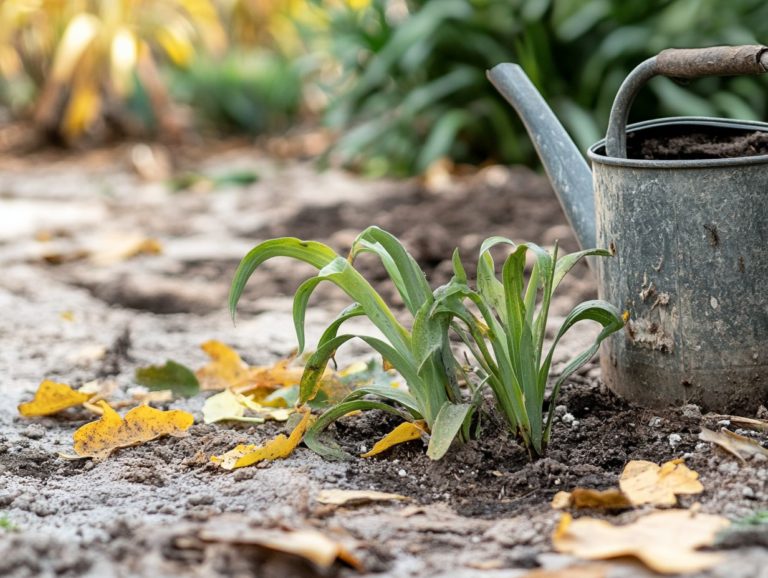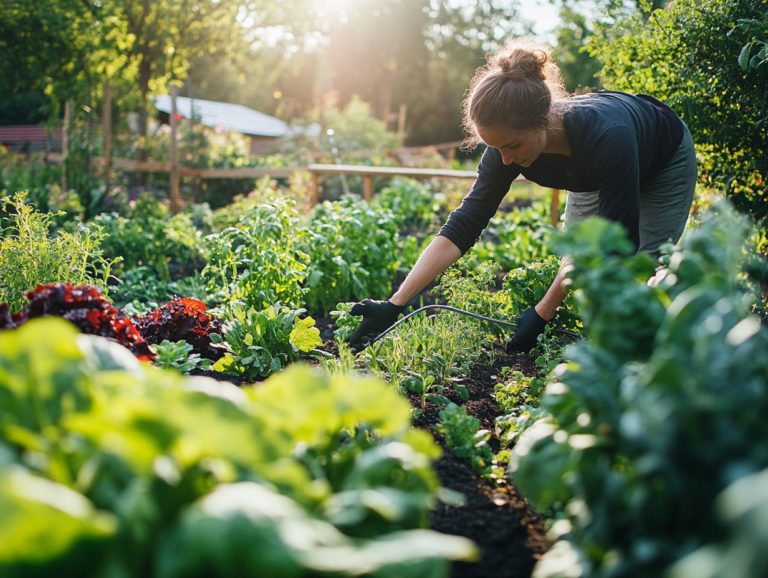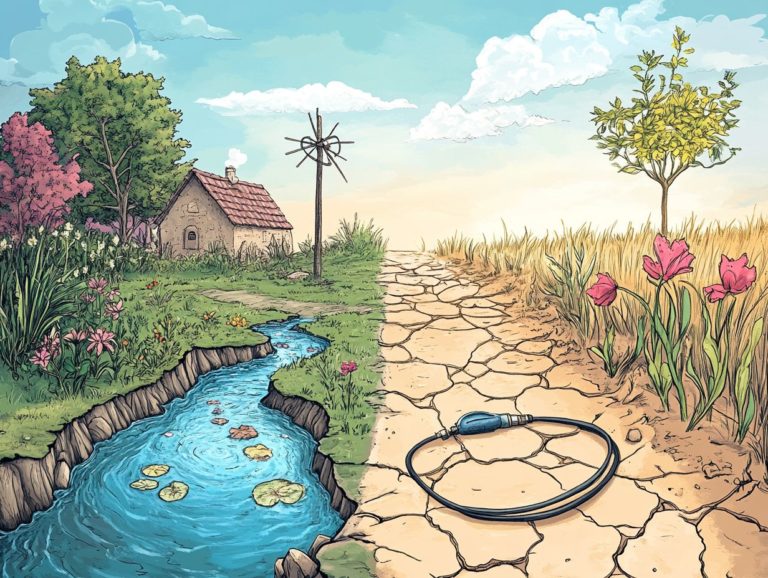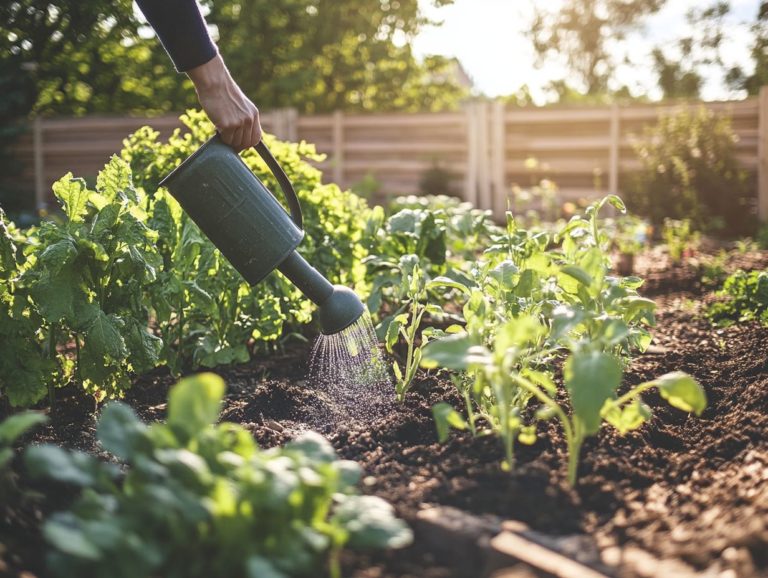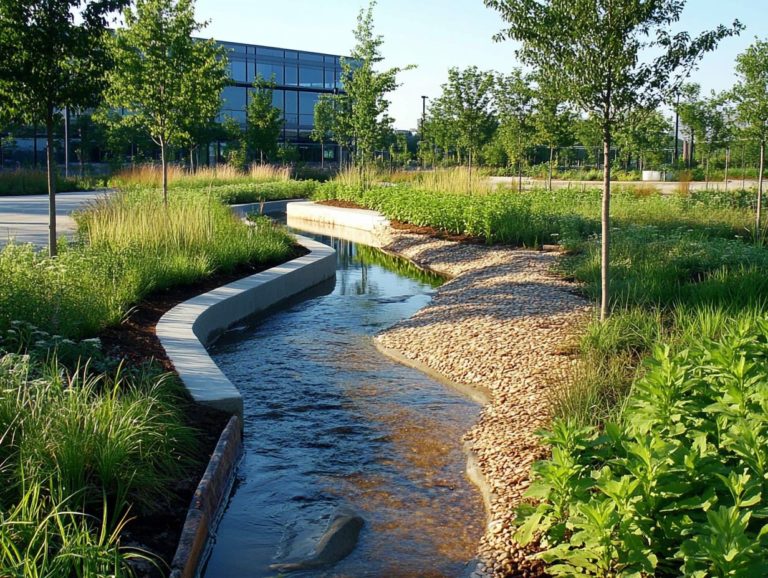The Importance of Soil Aeration for Water Management
Soil aeration plays a pivotal role in effective land management, influencing everything from plant vitality to water drainage. When aeration is inadequate, significant challenges arise, such as waterlogging and soil compaction, both of which can suffocate plants and stunt their growth.
This article delves into the importance of soil aeration, its implications for water management, and practical techniques to enhance it. Whether you’re an experienced gardener or just beginning your journey, understanding these concepts will empower you to cultivate healthier soil and nurture more resilient plants.
Contents
- Key Takeaways:
- Understanding Soil Aeration
- Effects of Poor Soil Aeration
- The Role of Soil Aeration in Water Management
- Methods for Improving Soil Aeration
- Best Practices for Maintaining Soil Aeration
- Frequently Asked Questions
- What is soil aeration and how does it impact water management?
- How does soil aeration help with water infiltration?
- Why is soil aeration important for preventing soil erosion?
- Can soil aeration reduce the need for watering?
- How does soil compaction affect water management?
- What are some methods of aerating soil for water management?
Key Takeaways:
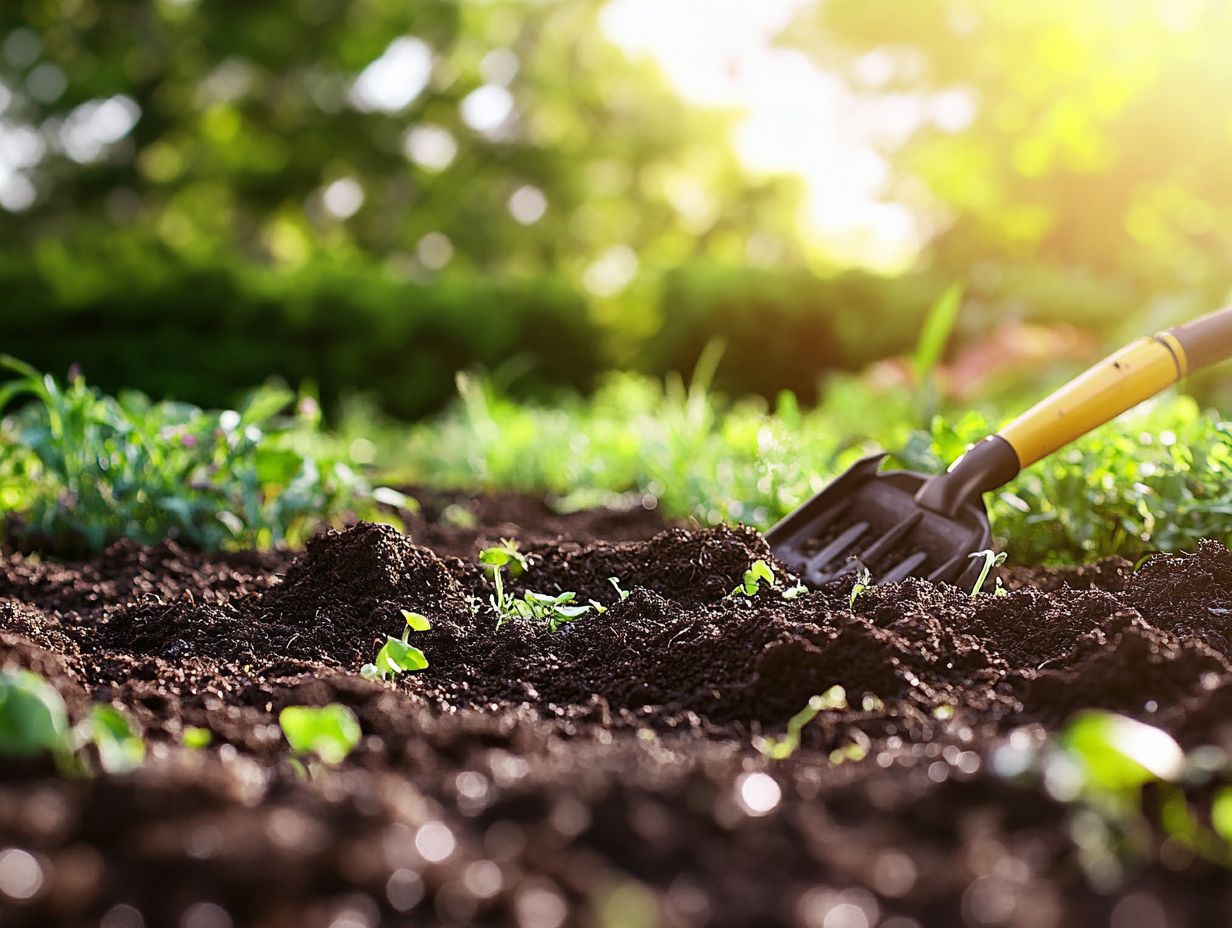
- Did you know? Soil aeration is key to preventing waterlogging and boosting plant health!
- Protect your crops by enhancing soil aeration to reduce water retention and combat soil erosion!
- Employ mechanical and natural techniques to maintain healthy soil aeration for long-term water management success!
Understanding Soil Aeration
Understanding soil aeration is essential for improving your agricultural practices and maximizing field productivity. Soil aeration is the process by which air primarily oxygen moves through the soil, enabling root growth and nutrient absorption crucial for thriving plants.
When soil aeration is properly managed, it maintains the soil’s structure and moisture content while preventing harmful compaction that can restrict root expansion and compromise soil health. This vital process directly affects the oxygen available to tiny living organisms in the soil, known as soil microorganisms, ultimately impacting your crop yields and the sustainability of your agricultural systems.
Definition and Importance
Soil aeration is the essential process of exchanging gases between the soil and the atmosphere, ensuring that plant roots and soil microorganisms receive sufficient oxygen.
This process supports respiration for both roots and beneficial microbes while improving the overall soil structure, which is key to healthy plant growth. Well-aerated soil allows roots to delve deeper, accessing essential nutrients more efficiently and promoting robust plant development. Poor aeration, on the other hand, leads to compacted soil, restricting root expansion and reducing nutrient uptake, ultimately impacting agricultural productivity.
Over time, insufficient aeration can lead to soil degradation, affecting its health and fertility. You must regularly check your aeration practices to keep your soil thriving!
Effects of Poor Soil Aeration
Poor soil aeration can have a cascade of negative effects that should be avoided. It often leads to soil compaction and waterlogging, both of which severely hinder crop yields and compromise soil health.
Compacted soil restricts the movement of air and water, resulting in diminished oxygen levels essential for plant roots. This situation also promotes carbon dioxide accumulation in the soil.
The repercussions extend beyond just root growth; the formation of earth pores can impede moisture retention and nutrient availability, amplifying the challenges faced in agriculture.
In conclusion, enhancing your soil aeration practices is crucial for achieving optimal agricultural productivity. Explore various techniques and stay informed on best practices to ensure your soil remains healthy and productive!
Waterlogging and Compaction
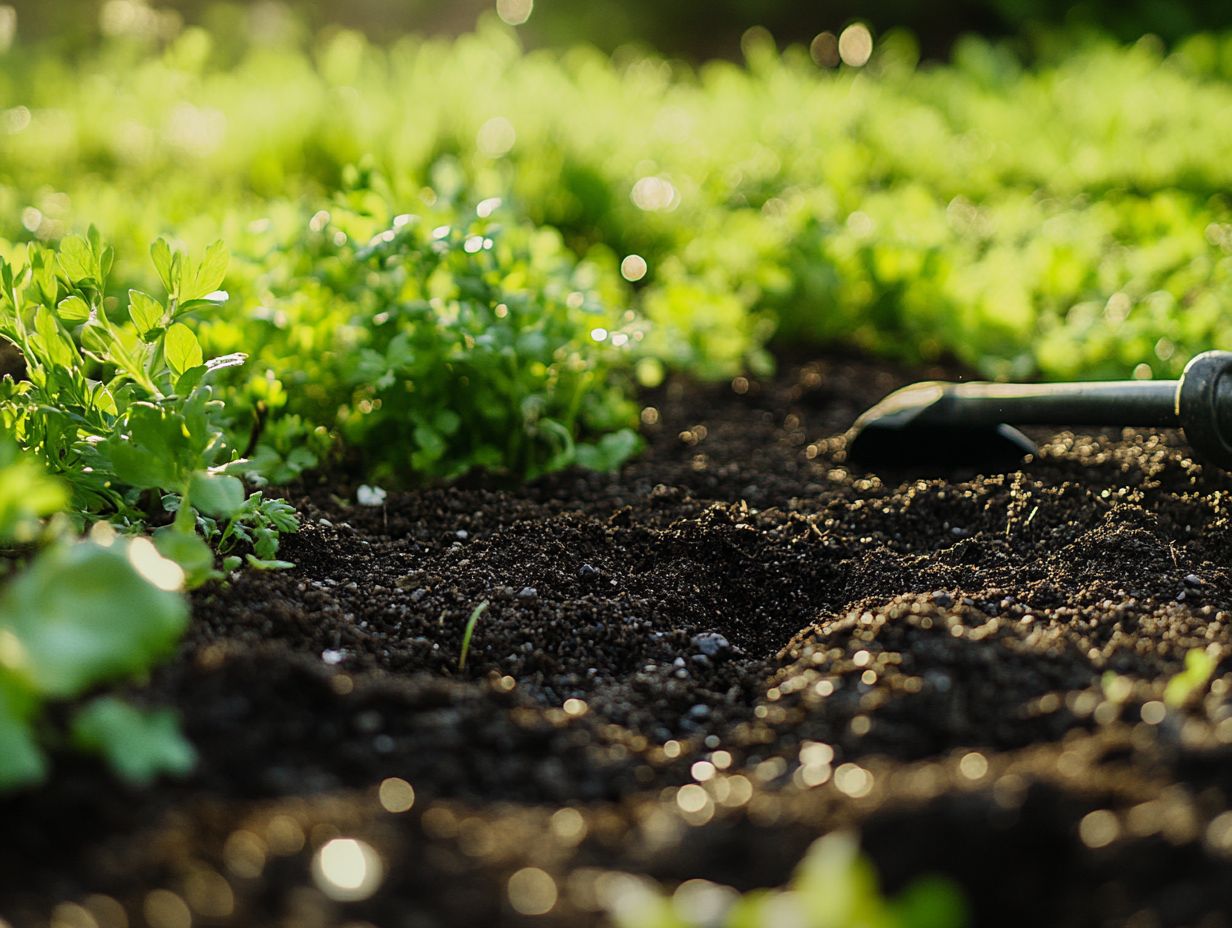
Waterlogging and soil compaction are direct outcomes of insufficient soil aeration, which compromises the oxygen supply and nutrient absorption for your plants.
When your soil becomes overly saturated due to inadequate drainage systems, water gathers in the root zone, creating conditions where oxygen levels plummet. This oxygen deprivation hinders root respiration. It can lead to root rot, further jeopardizing your plants’ vitality.
Simultaneously, soil compaction worsens the situation by reducing pore space, limiting both water infiltration and drainage capabilities. This means that essential nutrients become less accessible to your crops, hindering their growth and overall health.
To counter these issues, consider implementing effective agricultural practices like crop rotation and cover cropping. These strategies can dramatically improve your soil structure!
The Role of Soil Aeration in Water Management
Soil aeration is crucial for effective water management, significantly enhancing your drainage systems and promoting water infiltration. Understanding the importance of soil moisture management is vital for maintaining optimal soil moisture levels for your crops.
When your soil is adequately aerated, it improves its ability to absorb and retain water, effectively preventing issues like runoff and waterlogging. Aeration helps roots grow healthier. This boosts soil vitality, reduces erosion, and supports sustainable farming!
Improving Drainage and Water Infiltration
Improving drainage and water infiltration through effective soil aeration techniques is essential for elevating soil moisture levels and boosting your agricultural productivity.
You can adopt various methods to achieve these goals, such as integrating cover crops into your rotation strategies for enhancing soil moisture and organic matter levels. Cover crops, with their deep roots, not only help break up compacted soil but also contribute organic matter that enhances soil structure.
Additionally, incorporating organic amendments like compost can significantly improve the nutrient profile and water-holding capacity of your soil.
Practices such as subsoiling a technique that loosens the soil layers below the surface and using tools that help aerate the soil, when executed properly, can create better airflow and allow water to move more freely through the soil. This ultimately leads to stronger, more resilient crops and sustainable farming outcomes for you!
Reducing Soil Erosion
Soil aeration is crucial for reducing soil erosion, as it maintains soil structure and boosts organic matter content, which ultimately leads to improved crop yields and sustainable agricultural practices.
When you ensure adequate aeration, water infiltration and root development flourish, creating a vibrant ecosystem that nurtures microbial activity. This process not only enhances the stability of soil structure but also accelerates the decomposition of organic materials, enriching the soil profile in the process.
The interplay between aeration and soil health guarantees that your crops can access essential nutrients more efficiently, fostering a resilient agricultural system. Act now! Embracing aeration practices helps combat erosion and boosts your productivity!
Methods for Improving Soil Aeration
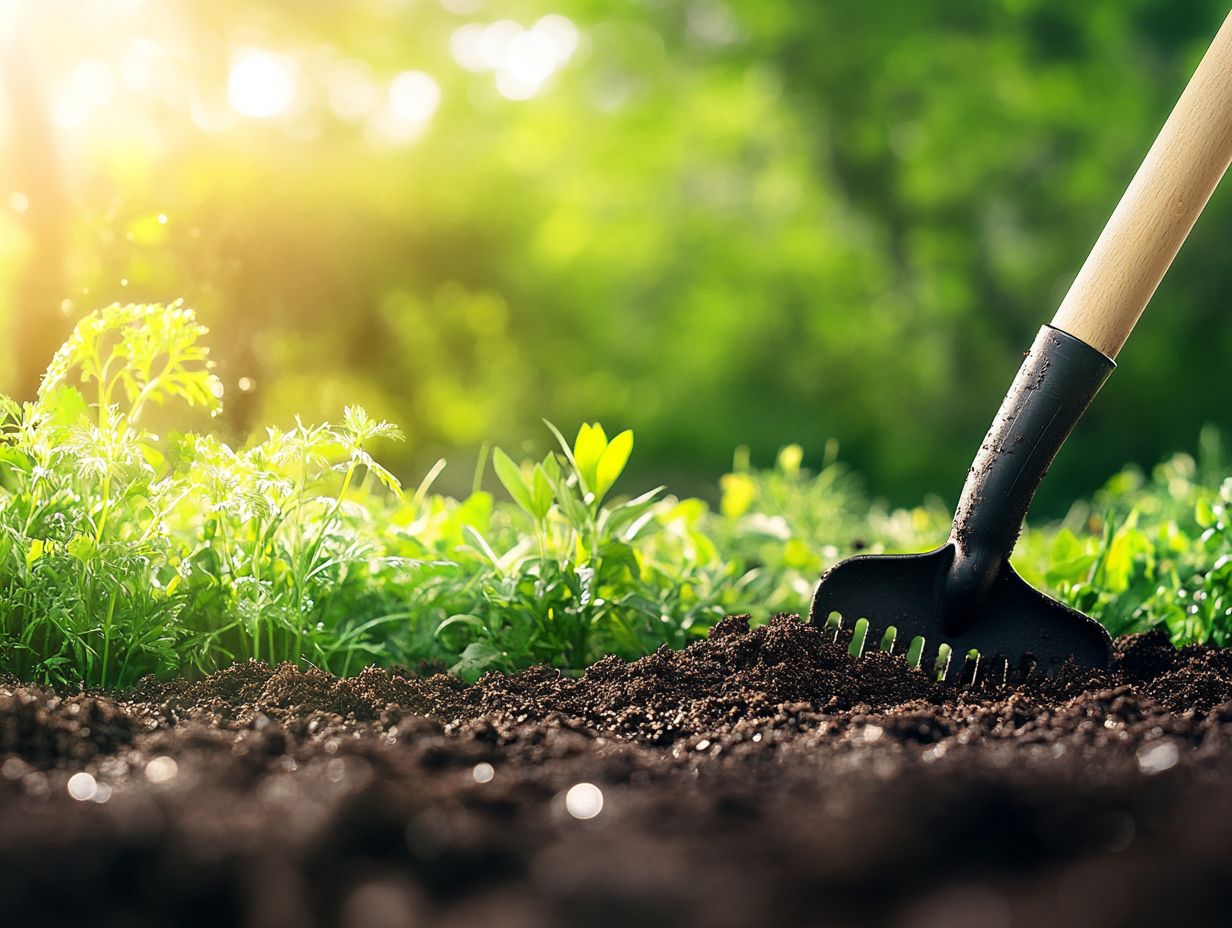
You have a variety of effective methods at your disposal for enhancing soil aeration. These range from mechanical techniques that utilize heavy machinery to more organic approaches that promote overall soil health and structure.
Mechanical and Natural Techniques
Mechanical techniques for soil aeration, like tillage and various aeration equipment, contrast with natural methods such as cover cropping and applying organic amendments.
Each approach offers unique benefits to enhance soil structure and vitality. While tillage breaks up compacted layers, excessive use may disrupt delicate soil ecosystems and lead to a loss of valuable organic matter. Aeration tools, like spike or core aerators, significantly improve water infiltration and root development, fostering a healthier environment for your crops.
Natural techniques, such as incorporating cover crops, prevent soil erosion and enhance microbial activity, vital for nutrient cycling. Organic amendments like compost boost soil fertility and improve moisture retention, making them essential for sustainable agricultural practices aimed at nurturing long-term soil health.
Best Practices for Maintaining Soil Aeration
You must maintain soil aeration for successful sustainable agriculture. This requires your commitment to best practices that enhance soil health, boost organic matter, and adapt grazing techniques to promote aeration over time.
By implementing proper management strategies in your agricultural practices, you improve soil aeration and ensure long-term productivity and higher crop yields in your fields.
Tips for Long-Term Management
Long-term management of soil aeration requires you to implement sustainable agricultural practices that consistently enhance soil health and organic matter levels.
Adopting these practices improves the physical properties of your soil and elevates its biological activity essential for robust plant growth and nourishing the ecosystem. Consider crop rotation and cover cropping as vital strategies to diversify root structures and strengthen soil structure.
By rotating different crops, you naturally mitigate pest pressures and enhance nutrient cycling, creating a more balanced ecosystem.
Incorporating cover crops during off-seasons is an effective approach; it prevents soil erosion while increasing organic matter and promoting microorganism activity. Reduced tillage also supports these strategies by minimizing soil disturbance, thus preserving soil integrity and enhancing aeration methods.
Integrating these practices into a holistic approach to sustainable agriculture sets the stage for enduring improvements in soil health and overall field productivity. Start implementing these strategies today for healthier soil and better crops!
Frequently Asked Questions
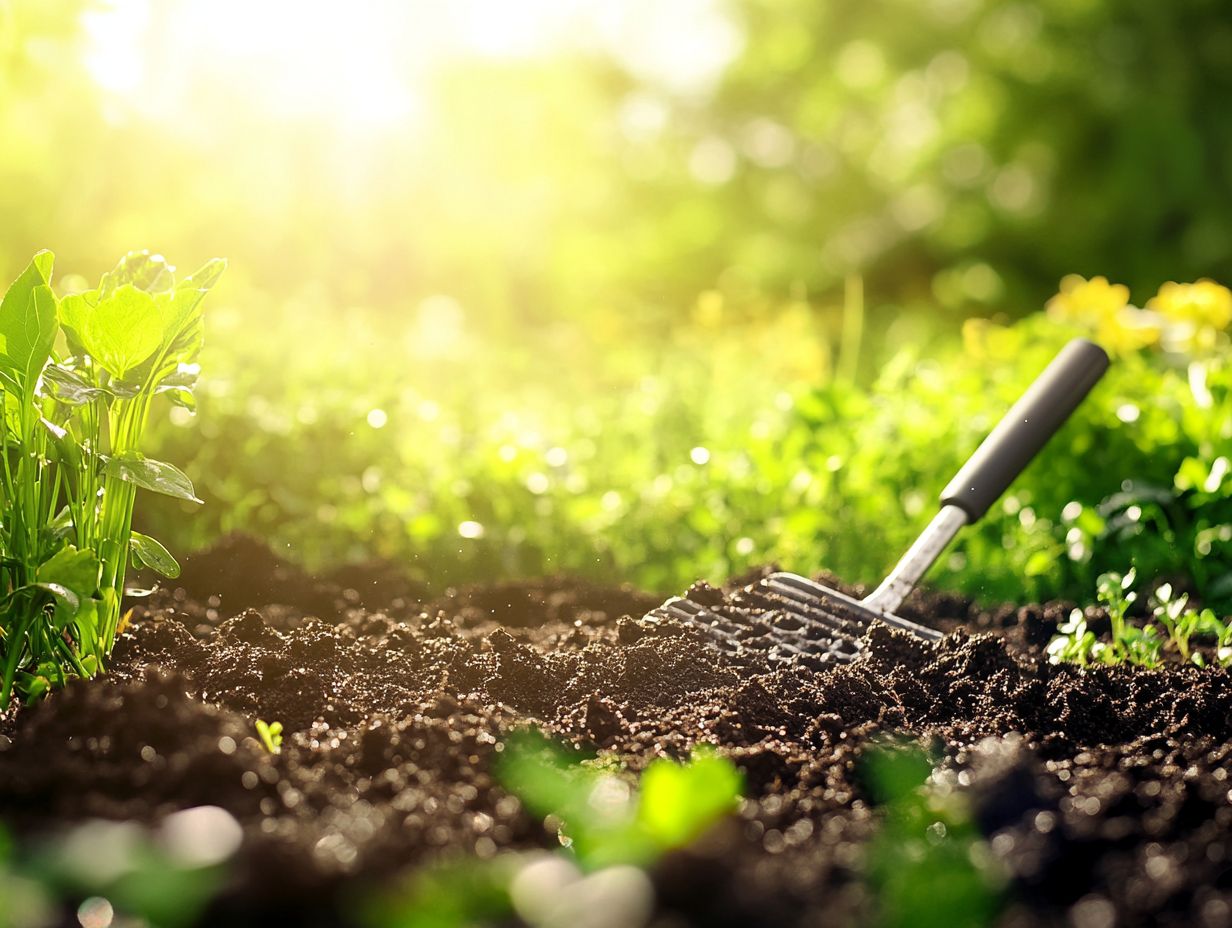
What is soil aeration and how does it impact water management?
Soil aeration is the process of creating air pockets in the soil to allow for the circulation of oxygen, essential for plant growth. It plays a crucial role in water management by improving infiltration and drainage, reducing soil erosion, and promoting healthy root development.
How does soil aeration help with water infiltration?
When soil is compacted or has poor structure, water cannot easily penetrate. Aeration creates channels in the soil, allowing water to reach plant roots. This prevents water runoff and improves distribution within the soil.
Why is soil aeration important for preventing soil erosion?
Compacted soil can cause water to pool on the surface, leading to erosion. Aeration improves soil structure, making it less prone to erosion. It also promotes healthy root growth, which anchors the soil and prevents it from being washed away.
Can soil aeration reduce the need for watering?
Yes, soil aeration can reduce watering needs by improving the water-holding capacity of the soil. Aerated soil retains moisture better, reducing the frequency of watering. This is particularly beneficial for water management in areas with limited water resources.
How does soil compaction affect water management?
Soil compaction seriously affects how water is managed in your garden! It reduces water infiltration, causing runoff and erosion.
This leads to waterlogged conditions that aren’t suitable for plants to thrive.
What are some methods of aerating soil for water management?
There are several effective ways to aerate your soil. You can use tools to make holes in the ground, which helps water to soak in.
Another method is adding substances like gypsum to loosen compacted soil. You can also plant species with deep roots that naturally aerate the ground.

